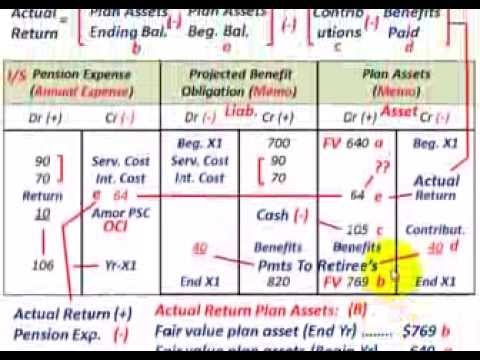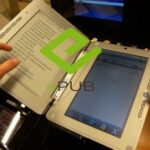
Here are four common methods of calculating annual depreciation expenses, along with when it’s best to use them. Businesses have some control over how they depreciate their assets over time. Good small-business accounting software lets you record depreciation, but the process will probably still require manual calculations. You’ll need to understand the ins and outs to choose the right depreciation method for your business. The units of production method recognizes depreciation based on the perceived usage (“wear and tear”) of the fixed asset (PP&E). The double declining method (DDB) is a form of accelerated depreciation, where a greater proportion of the total depreciation expense is recognized in the initial stages.
However, one can see that the amount of expense to charge is a function of the assumptions made about both the asset’s lifetime and what it might be worth at the end of that lifetime. Those assumptions affect both the net income and the book value of the asset. Further, they have an impact on earnings if the asset is ever sold, either for a gain or a loss when compared to its book value.
What is the approximate value of your cash savings and other investments?
This will be done over the next 12 years (15-year lifetime minus three years already). The third scenario arises if the company finds an eager buyer willing to pay $80,000 for the old trailer. As you might expect, the same two balance sheet changes occur, but this time, a gain of $7,000 is recorded on the income statement to represent the difference between the book and market values. Depreciation can be helpful because it enables a business to spread out the cost of an asset over the asset’s usable life.

Each year, the accumulated depreciation balance increases by $9,600, and the press’s book value decreases by the same $9,600. At the end of five years, the asset will have a book value of $10,000, which is calculated by subtracting the accumulated depreciation of $48,000 (5 × $9,600) from the cost of $58,000. Recall that determination of the costs to be depreciated requires including all costs that prepare the asset for use by the company.
Great! The Financial Professional Will Get Back To You Soon.
Titus, the plant supervisor, determined the technical feasibility test of the bottling machine. Find out the depreciated expense for each year using the straight-line method. The cost of the asset minus its residual value is called the depreciable cost of the asset. However, if the asset is expected not to have residual value, the full cost of the asset is depreciated.
The Modified Accelerated Cost Recovery System, or MACRS, is another method for calculating accelerated depreciation. This works well for vehicles, equipment, and other physical assets, but it cannot be used for intangible assets. The General Depreciation System (GDS) is the most common method for calculating MACRS. When you have a fixed asset like a vehicle, building, or piece of equipment, these things will naturally suffer some wear and tear over attention required! time.
- Leasehold properties, patents, and copyrights are examples of such assets.
- Depreciation measures the value an asset loses over time—directly from ongoing use (through wear and tear) and indirectly from the introduction of new product models (plus factors such as inflation).
- This is the expected value of the asset in cash at the end of its useful life.
- Capital expenditure is a fixed asset that is charged off as depreciation over a period of years.
- Here, the estimated lifetime bottling capacity of the machine is 100,000,000 bottles.
- You’ll need to understand the ins and outs to choose the right depreciation method for your business.
Why Are Assets Depreciated Over Time?
The depreciation expense reduces the carrying value of a fixed asset (PP&E) recorded on a company’s balance sheet based on its useful life and salvage value assumption. In accounting, fixed assets’ value declines every year due to wear and tear caused by constant usage. This happens throughout the useful life of an asset.Companies depreciate to account for the cost of fixed assets. After all, every asset has a specific lifespan and turns into scrap after this period. Therefore, recording the regressive vs proportional vs progressive taxes appropriate book value of an asset helps accumulate funds for its future replacement.
How These Assets are Recorded
When a company buys an asset, it records the transaction on its balance sheet as a debit (this increases the asset account on the balance sheet) and a credit; this reduces cash (or increases accounts payable) on its balance sheet. Neither of these entries affects the income statement, where revenues and expenses are reported. There are four allowable methods for calculating depreciation, and which one a company chooses to use depends on that company’s specific circumstances. Small businesses looking for the easiest approach might choose straight-line depreciation, which simply calculates the projected average yearly depreciation of an asset over its lifespan. Since different assets depreciate in different ways, there are other ways to calculate it.
Depreciation measures the economic effect of this wear and tear and allows you to allocate that change in value over the asset’s usable life. Both US GAAP and International Financial Reporting Standards (IFRS) account for long-term assets (tangible and intangible) by recording the asset at the cost necessary to make the asset ready for its intended use. Additionally, both sets of standards require that the cost of the asset be recognized over the economic, useful, or legal life of the asset through an allocation process such as depreciation. However, there are some significant differences in how what is gross monthly income the allocation process is used as well as how the assets are carried on the balance sheet.


